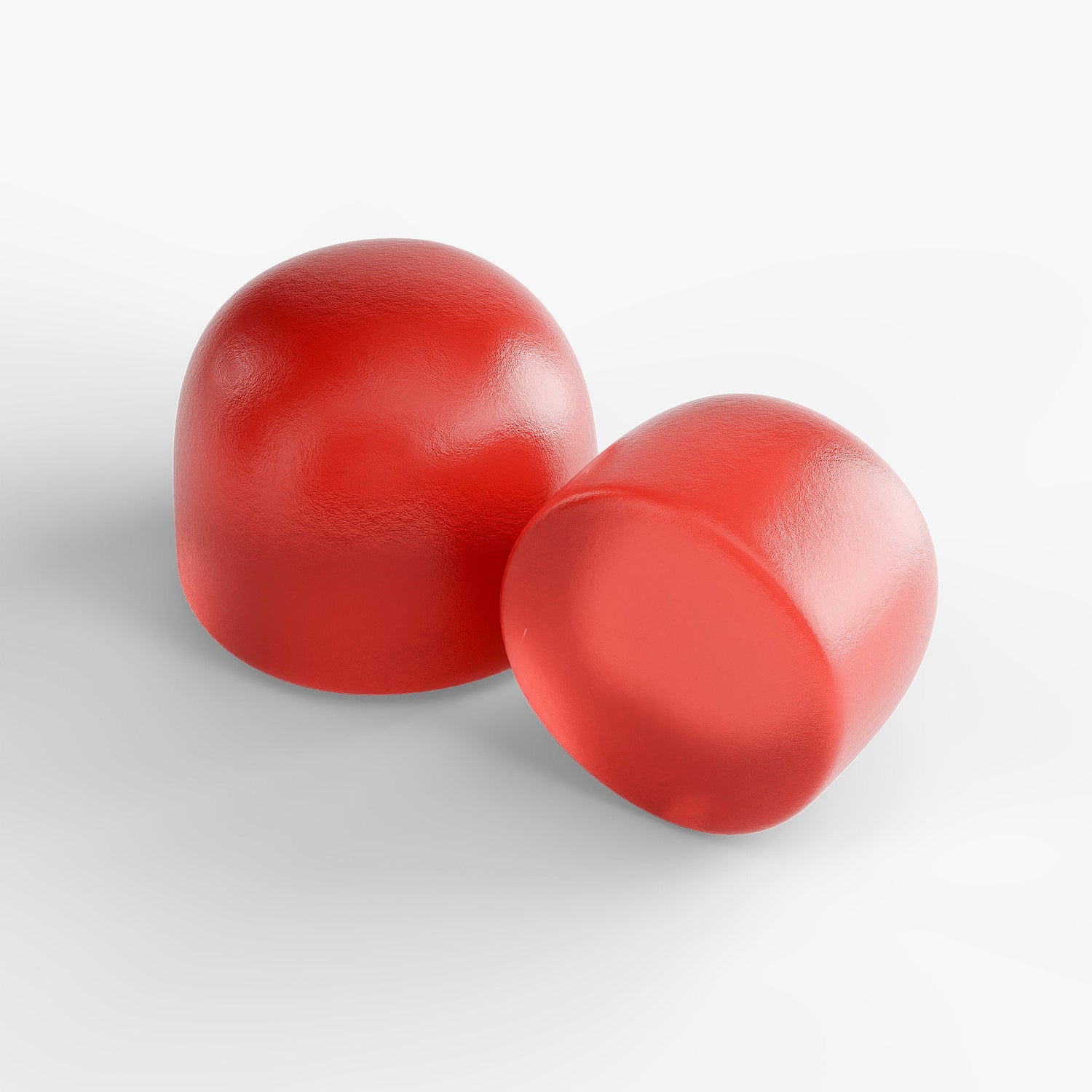Resveratrol: Evidence, Benefits, Dosage & Smart Supplementation
Quick take: Resveratrol (especially the trans-form) is a plant polyphenol found in grape skins, berries, peanuts, and Japanese knotweed. It’s being studied for cardiometabolic support, neuroprotection, and healthy aging, but human outcomes are mixed and dosage/bioavailability matter.
TL;DR: Resveratrol is a polyphenol with antioxidant properties being explored for cardiovascular diseases, metabolic health, and healthy aging. Human evidence is mixed: some clinical trial data shows that resveratrol can modestly improve blood sugar and insulin resistance in select groups, with benefits most likely at well-chosen doses and good absorption strategies. Safety is generally good at typical amounts, but high doses can cause GI upset. Always talk to your clinician if you use anticoagulants.
What Is Resveratrol?
Resveratrol is a natural polyphenolic stilbenoid produced by plants—especially grape skins, berries, peanuts, and Japanese knotweed—when under stress. In its most studied and bioactive configuration (trans-resveratrol), it has been explored across thousands of papers for roles in cellular defense, oxidative stress modulation, and vascular support. (Its cis isomer exists but is generally less biologically active.)
Resveratrol Sources: Not Just Wine
Whole foods

- Red grapes (skins), blueberries, cranberries, mulberries
- Peanuts & peanut butter (sprouting can boost content)
- Walnuts, dark chocolate/cocoa (bonus flavonoids)
Tip: rely on diverse plants, not alcohol, for polyphenols.
Red wine?

Wine contains modest resveratrol (varies by grape & processing), but alcohol and calories limit its usefulness as a “delivery system.” Food-first beats “vino-first.”
Supplement source

Many high-purity extracts come from Japanese knotweed (Polygonum cuspidatum), typically standardized to trans-resveratrol.
Health Benefits
Cardiovascular health
Resveratrol’s antioxidant properties and anti-inflammatory actions may support endothelial (blood-vessel) function and vascular elasticity. Human clinical trial evidence is mixed but directionally positive in some groups: a subset of meta-analyses shows that resveratrol can modestly lower systolic blood pressure and improve markers relevant to cardiovascular diseases and heart disease, especially when formulations improve exposure.
Anti-inflammatory & antioxidant
By modulating NF-κB and COX-2 and bolstering cellular defenses, resveratrol may exert protective effects across tissues. These pathways help explain observed benefits on the vascular lining (blood vessel health) and brain aging biology in preclinical models.
Neuroprotection & cognition
Early human studies and preclinical data suggest support for neuronal resilience and synaptic plasticity. While not definitive, a growing body of research shows that resveratrol can influence mechanisms tied to brain blood flow and oxidative defense, consistent with its antioxidant properties.
Metabolic support
Across heterogeneous trials, resveratrol is associated with small, population-dependent improvements in blood sugar control and insulin resistance (e.g., fasting glucose and HOMA-IR). Effects are more likely when dosing, duration, and formulation are aligned—and less likely at under-dosed or poorly absorbed regimens.
What about anti-cancer claims?
In vitro and animal models show effects on tumor initiation/proliferation pathways, but human evidence remains inconclusive. Consider any anti-cancer marketing as unproven.
Limitations & Challenges
Bioavailability
Resveratrol is rapidly metabolized and poorly water-soluble; circulating levels drop quickly without formulation help or dietary fat.
This is why some clinical trial results are inconsistent: exposure varies widely across products.Dose translation
Many mechanistic benefits come from higher concentrations not achievable via typical diets alone.
Human outcomes
Promising biological signals ≠ guaranteed clinical endpoints; results vary by population, dose, duration, and formulation quality. Some research shows that resveratrol improves intermediate markers, while other trials do not—often tied to differences in exposure and the use of high doses in lab settings that are hard to mirror in daily life.
Resveratrol Dosage & Safety (Human-centric)
Common supplemental ranges
- Low: 10–200 mg/day
- Typical “study” range: 150–500 mg/day
- High (short-term trials): up to 2–5 g/day → more GI side effects
Personalization matters: age, meds, liver status, goals.
Safety snapshot
- Generally well-tolerated at low–moderate doses
- GI upset more likely ≥1 g/day
- Drug interactions: can affect CYPs/transporters (e.g., warfarin & other anticoagulants—talk to your clinician)
- Long-term (multi-year) safety data: limited
Side Effects of Resveratrol & Who Should Be Cautious
If you’re researching resveratrol side effects, here’s the plain-English version. At common supplemental intakes, most people tolerate resveratrol well. The most frequently reported issues are digestive: mild nausea, stomach discomfort, and loose stools—especially at high doses used in research.
- Bleeding risk & meds: Resveratrol can influence platelet function and drug metabolism; speak with your clinician if you take anticoagulants (e.g., warfarin) or multiple prescriptions.
- Hormone-sensitive contexts: Resveratrol may interact with the estrogen receptor in lab models; individuals with hormone-sensitive conditions should consult a professional.
- Liver considerations: Use caution if you have liver disease or take hepatically metabolized drugs.
For search clarity: common queries include side effects of resveratrol and resveratrol supplement benefits. Benefits are typically linked to its antioxidant properties and potential protective effects on the blood vessel lining, but responses vary person to person.
What the Research Shows
Across human studies, the effects of resveratrol are modest and variable. Some evidence shows that resveratrol can support endothelial (blood vessel) function and select metabolic markers, while other trials are neutral—often due to differences in dose, duration, and absorption. Preclinical data explore interactions with the estrogen receptor, and multiple models report protective effects consistent with its antioxidant properties. In people, benefits appear more consistently when products deliver reliable exposure without resorting to impractical high doses.
Better Absorption & Formulation
Because bioavailability is the bottleneck, smart delivery helps:
With dietary fat
Take alongside a meal containing healthy fats (olive oil, nuts) to support uptake.
Formulation tech
Nanoemulsions, liposomes, micelles, phospholipid complexes aim to extend exposure and improve transport.
Synergy
Pairing with polyphenols like quercetin is explored for complementary kinetics and antioxidant networks.
How to Choose a Resveratrol Supplement
Look for products where the formulation has demonstrably resveratrol improved exposure (e.g., with healthy-fat co-ingestion or delivery tech), since many neutral outcomes trace back to poor absorption rather than a lack of biological potential.
- Look for trans-resveratrol with clear standardization
- Clinically relevant dose (often 150–500 mg daily)
- Third-party testing (purity, identity, heavy metals)
- Transparent label (no “proprietary fog”)
- Consider delivery support (liposomal, phospholipid, or stack with healthy fats)
- Avoid “miracle” anti-aging claims
- Discuss with your clinician if you take anticoagulants or multiple prescriptions
Practical Diet Tips
Add polyphenol diversity daily:
- Mix grape skins, berries, peanuts/walnuts, and a square of dark chocolate
- Think “rainbow produce” + nuts/seeds; it’s about the whole polyphenol network, not one hero compound
- Enjoy red wine only if appropriate—don’t rely on alcohol for resveratrol
Resveratrol & Anti-Aging: Hype vs Hope
Resveratrol activates longevity-related pathways (e.g., SIRT1) in preclinical models and may support neuro- and cardiometabolic health. However, lifespan extension in humans hasn’t been shown. Frame it as a supportive polyphenol within a bigger lifestyle (sleep, movement, nutrition, stress care), not a silver bullet.
🌿 Experience the Power of Resveratrol—The Nutreska Way
Resveratrol+ by Nutreska combines high-purity trans-resveratrol (250 mg) with bioavailability-minded design and clean labeling.
Designed to support endothelial (blood-vessel) health within a lifestyle approach to cardiovascular diseases risk management under clinician guidance.- Clinically relevant dosage
- Plant-based, non-GMO, third-party tested
- Formulated to play well with healthy-fat meals
FAQ
What are the most common resveratrol side effects?
The most typical side effects of resveratrol are mild digestive issues (nausea, stomach upset, loose stools), which are more likely at high doses. If you take anticoagulants or several medications, speak with your clinician first. For many readers comparing options, it helps to balance resveratrol supplement benefits with your personal risk factors.
Is wine a good way to “supplement” resveratrol?
Not ideal. Levels are modest and variable; alcohol brings drawbacks. Prefer food diversity and, if needed, a standardized supplement.
When should I take resveratrol?
With a meal that includes healthy fats to support absorption. Stay consistent daily for steady exposure.
Can I take it with blood thinners?
Resveratrol can affect drug metabolism and platelet function; consult your clinician before use if you take anticoagulants or multiple prescriptions.
Information provided is educational and not a substitute for medical advice. If you are pregnant, nursing, have a medical condition, or take medications, consult your healthcare provider before using any supplement.

Ready to try Resveratrol the right way?
Shop Nutreska Resveratrol and pair it with a healthy-fat meal for better uptake. Always balance resveratrol supplement benefits with personal context and clinician guidance.





